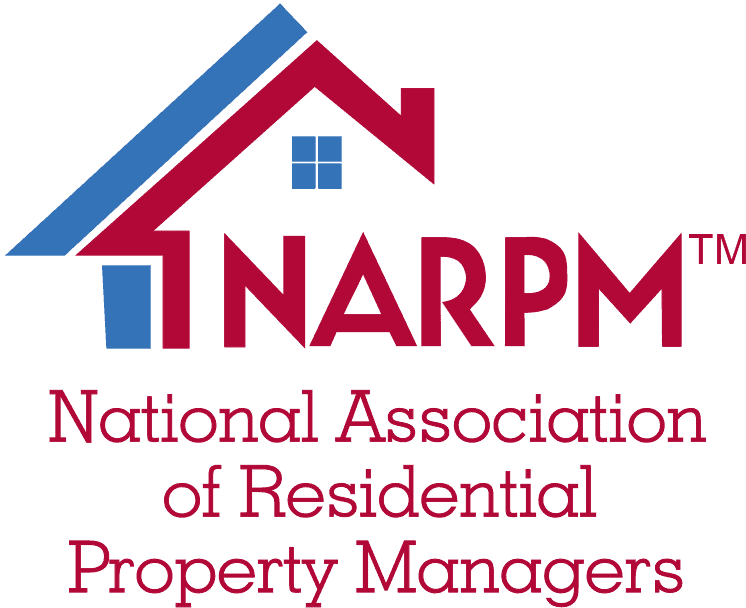No property manager wants to rent to a bad tenant. We won’t go over all the problems a bad tenant can bring, that’s why you’re here. It’s simple, the more steps you take to avoid bad renters, the better off you’ll be. In this article, we will be covering how the right checklist will help you make sure that all your new applicants go consistently through the same tenant screening process.

Unfortunately, it’s not always easy to spot a bad tenant based on their application. That’s why we have background and credit checks, and other forms of tenant screening. Setting up your own tried and true screening process is your first line of defense against problematic renters.
Thankfully, the simplest way to keep the right screening process with every new applicant is also the most effective. A thorough checklist can help you expedite the vetting process—or at least narrow it down to a manageable pool. You will also be able to use that checklist over and over again. Making a tenant screening checklist to support and solidify your standard operating procedure (SOP) will save you a lot of time and headaches.
Why use a checklist?
The answer is simple, you don’t want to miss any steps while running a tenant screening. Just like we already discussed, property managers who are haphazard in vetting their applicants are more likely to end up with bad tenants. Establishing a simple, yet thorough vetting checklist will close gaps in your screening and help you make informed decisions about reliable tenants.
Checklists might seem basic when it comes to something comprehensive like tenant screening, but that’s the beauty of why they work so well. The Checklist Manifesto shows us that breaking things down into simple, manageable steps helps us better understand and complete them. In short: it takes big tasks (like a tenant screening process) and breaks them into smaller ones.
You might be thinking “How would I forget a step on such an important process” and that could be right if you were to handle each applicant individually. Now, if you are doing well chances are you’ll be getting a constant flood of new applicants. Still, you’re experienced and take care of this yourself, you might be able to handle it. That’s until you remember that it’s time for inspections, so you stop and run your inspections. When your back, will you be able to remember the point you were at with each applicant? Still, there are better questions to ask yourself, can you afford to risk it? How much effort will it take to avoid that all together?
Ask yourself, do the steps you take to screen a tenant depend on that tenant in any way? Not likely, crafting a checklist that will work as a template for all your screenings will save you time and will be the perfect way to make sure you didn’t miss any crucial steps.
With each tenant screening step laid out plainly on a checklist, you’re able to accomplish this critical task over and over again. Better yet, as part of your SOPs, checklists make tasks clear and repeatable for anyone doing the task. Your team doesn’t have to remember steps or check their screening method against someone else’s—it’s all laid out for them on a checklist. That’s particularly useful when introducing new members to your team.
Establishing a solid process
Formalize your tenant screening process to cover as many angles as possible, while still keeping things simple. Remember, the goal of tenant screening is to uncover those red flags that might sneak through in a general application. What you don’t want to do is complicate an already complex process.

Covering as many angles as possible and keeping it simple might seem like opposites. This is one of the times where technology can come in handy. Embedding media and descriptions to your process will allow you to keep the main structure simple without discarding important information. There’s no longer the need to choose between what you need and what is easy to follow.
There’s no longer the need to choose between what you need and what is easy to follow.
One mistake to avoid when establishing your Tenant Screening process is thinking of it as something subjective. Sure, if you call a previous Landlord asking for information on a prospect you need to use your got to discern if that information is accurate. Don’t let situations like this complicate your planning. There’s no need to come up with an algorithm or write a manual with every single possibility. Just add a step like “Reach out to previous landlord to ask questions about a prospective tenant” Keep it simple.
Build the best tenant screening checklist
Building the right checklist is crucial. You need to take the time to think of every step you take for your screenings. You might miss a step, or mix up the order. A good tip would be to take notes the next time you screen a new applicant. Once you have all the steps in the right order it’s time to start thinking about convenience. After all, the whole point of your checklist is to make things more convenient. Filter out any redundancies, group up related tasks, make sure step dependency is covered. It might seem a bit unnecessary until you think about how many times you’ll have to run tenant screenings. The math is simple, time spent polishing your checklist will be well spent.

First and foremost, avoid having too many steps in your process. A 100-step checklist is no less intimidating than trying to recall a complete screening process from memory. Instead, “keep it simple, stupid” (KISS)! Second, don’t forget to update, refresh and revive templates as your process evolves. Using an outdated checklist on a modern process is a recipe for errors. And finally, make sure your checklists are the final product of your SOPs—in other words, make sure they’re being used!
Not sure where to start when it comes to building your own tenant screening checklist? Check out some of the field-tested, proven property management templates Manifestly has to offer. We’re certain you’ll quickly see just how critical a simple checklist can be in keeping bad tenants to a minimum. Let’s take a look at the steps covered in our template.
Show Apartment
- Phone pre-screen
- Schedule showing
- Email rental application
Employment & Previous Landlord Confirmation
- Reach out to previous landlord to ask questions about prospective tenant.
- Send a landlord verification form for them to fill out and fax back to you.
- Send employment verification to employer to complete.
After Decision
- If accepted, use the New Tenant Checklist
- If declined, send denial letter. File the application and denial letter.
Now that you can personalize your workflow to add any additional steps that are part of your SOP. Manifestly makes editing your workflows very easy. Plus, you can add all kinds of media, files, and descriptions to each step. That allows you to keep a tight checklist without missing important details.
Once your workflow is finished you’ll be able to run independent checklists for every applicant that comes your way. You don’t have to obsess over getting it perfect the first time. Changes that you make to the workflow can be implemented on every active checklist. Which is pretty convenient when working with a team. A change in SOPs can give a hard time to some of your team members. Rolling out the changes to all active checklists will guarantee that your team gets a reminder about the changes at the right time.
As always, we’re happy to hear your thoughts. Could our Applicant Review template be any better? Are we missing any crucial steps? Please let us know by commenting on this post.
Never miss a thing with Manifestly
Manifestly lets you build checklists specific to your screening needs. It’s a one-size-fits-all solution that integrates into your existing SOPs—whether they’re formalized or not. It brings several critical variables into play that you just don’t get with paper and pencil processes, including:
- Digital integration with phones, tablets, and computers, as well as numerous applications like Slack, Zoho, Gmail, Mailchimp, sales force and more.
- Cloud collaboration that provides much-needed organization and transparency to your SOPs.
- All checklists are saved in the cloud. Which means you can check on your progress wherever you are. That also includes completed checklists so you can easily check old applications.
- Handling multiple applicants at the same time? Manifestly will let you see multiple checklist runs on the same page. You won’t even need to open them one by one.
- Repeatability of checklists thanks to templating, as well as modifications that are immediately integrated into your workflows.
- Visibility that comes from digital alerts and integration, so you’re always on top of in-progress checklist runs and progress.
- Problems with new employees? Manifestly works as an interactive documentation for your SOPs, all build on a user-friendly platform. Make it easier for them and safer for you.
- Improve and update your workflows easily. You don’t need to come up with all the ideas, leverage all the ideas of your team with the process improvement through feedback feature.
Even more importantly, you’ll always be ready if the need arises. Did a bad tenant sneak by your vetting process? Don’t worry, Manifestly’s historical data features will keep all the documents and information you might need for a hearing save in the cloud. Just one click away.
Don’t let your team miss anything either
If you’re a successful Property Manager you should have a team to support you, and that can get tricky. After all, if any of your team members miss a step on your Tenant Screening process the consequences will be just as harmful. Telling a bad tenant that he only got the apartment because your employee screwed up won’t make him pay on time, or take better care of the property. Any mistakes of your team are your responsibility, so you should do all you can to make sure they won’t miss any steps either.
Thankfully you’ll have an easy time at it with Manifestly. Features like assignments, where you can assign team members with full checklists or individual steps, will ensure there are no mixups. You can keep a close eye on their work with the activity history. Plus, you won’t need to make sure they didn’t forget anything, Manifestly will do it automatically for you.
In conclusion, the more properties you’re managing the more sense it makes to build and use checklists. Doing it with Manifestly will be a breeze. Plus, this will help you with much more than tenant screenings. Think about it for a second, are there any other SOPs that repeat over and over? Our favorites are Apartment Turnover Maintenance Checklist, New Client (New Property to Manage), New Tenant (Tenant Move In), Tenant Move Out. Can you think of any other SOPs that can benefit from a checklist? Let us know how we could make your work even easier by commenting on this post.





